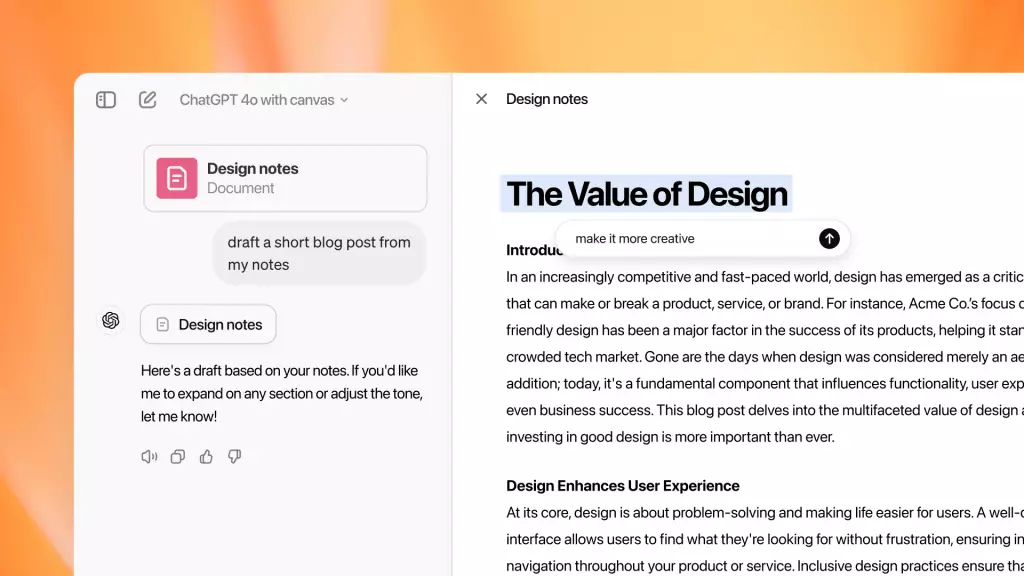In a significant move to democratize access to its advanced digital editing tool, OpenAI has announced that its Canvas feature is now available to all users of ChatGPT. Initially, this highly praised functionality was restricted to premium users — including subscribers of ChatGPT Plus, Teams, Edu, and Enterprise. The announcement, made during a livestream event celebrating OpenAI’s “12 Days of OpenAI” initiative, marks a pivotal moment in how users interact with the platform. By leveraging this tool, OpenAI aims to enhance creative productivity and streamline the user experience to move beyond the traditional chat interface.
Canvas redefines the ChatGPT interface by replacing the conventional format with a dual-panel setup: a sidebar for conversation and a dedicated workspace on the right. This setup allows for simultaneous interaction and editing, giving users the ability to manipulate texts, code blocks, or other content directly in a more organized manner. Unlike previous versions where users had to ask for changes resulting in new responses, Canvas executes adjustments live in the workspace, reinforcing user engagement and efficiency. This interactive capability positions Canvas as a unique asset for developers and content creators looking for seamless integrations and enhancements.
One of the standout features of the new Canvas is its integrated support for Python code. Users can now paste Python directly into the tool, facilitating immediate code testing and execution without the cumbersome back-and-forth of copying and running code separately. This capability signifies a leap toward making AI tools more interactive and practical, bridging the gap between theoretical coding exercises and real-world application. Furthermore, the ability to preview graphics generated from code inputs enhances the functionality further, enabling users to fine-tune their visualizations with real-time feedback.
For users creating custom GPTs, Canvas offers a default integration, thus providing them with an immediate resource to enhance their applications. The flexibility of Canvas allows custom creators to set specific conditions for when the tool will be engaged, tailoring the user experience based on the needs of their audience. OpenAI’s decision to keep Canvas as an optional feature for existing custom GPTs indicates a thoughtful consideration of user preferences and established workflows, ensuring that transitions to this new interface can be managed without disruption.
As Canvas becomes more integrated into the ChatGPT experience, OpenAI is not just enhancing an existing tool but is recalibrating the very nature of user interactions within the digital realm. By continuously evolving its offerings and expanding accessibility to groundbreaking features, OpenAI is setting the stage for a future where technology serves as an intuitive partner in creative processes. As users begin to explore the full potential of Canvas, it may very well become a pivotal element in how we approach digital problem-solving and creative expression in an increasingly intertwined technological landscape.


Leave a Reply